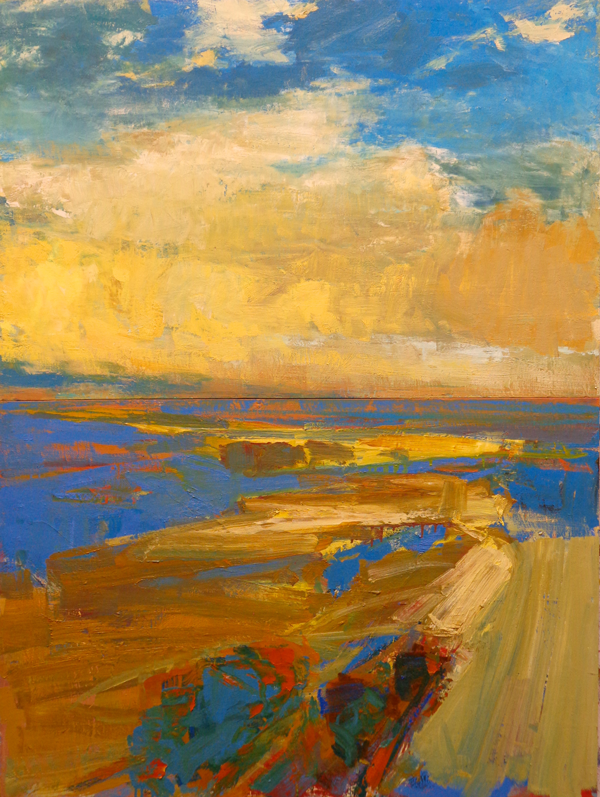
Patrick Adams grew up in Worthington, Minnesota, and moved to Lexington, Kentucky, two decades ago for his master of fine arts degree from the University of Kentucky. Today he teaches in the art departments at the University of Kentucky School of Art and Visual Studies and at Eastern Kentucky University. Fire Falling is part of a diptych series of landscape paintings, which bisect land and sky horizontally. The series illustrates how “the physical and spiritual worlds are brought together,” Adams says.
I’ve been painting and selling works since I was in grade school. I sold my first painting when I was 12. I was known as “The Artist.” (It was a very small town.) Actually, I was equally involved in music and went to college in Minnesota on a dual scholarship. I was a trumpet player, and then I had a marching-band injury. So I got more interested in art. I met some great professors, and that’s when my art took off.
My landscape paintings are directly related to a professor I studied under at Winona State University. He would do these landscapes from up on the bluffs, like La Crosse, Wisconsin, looking over the river. I inherited that from him, this idea of being very far above the landscape so it abstracts it, tips it up towards you, and flattens it out.
For the diptych series, I spent a lot of time in Shakertown [in Pleasant Hill, Kentucky]. They have these wonderful overlooks. It’s up on a hill, and you can go up there and look down on the river valley.
When people ask me, “Are these real places?” I say, well, yes and no. They begin there, but where they end is somewhere else. But that’s what I want. Landscape gives me something to hang on to. I’ve never been a purely abstract painter. All of my work begins in observation; it’s tied to something. Sometimes it gets very lost in the process, sometimes it changes, sometimes it stays very clear. I’m really an abstract painter. I follow the painting rather than the original idea. There’s a framework, but I wander quite a bit.
The memory is part of my process. I like what the memory does to the image. I want the details to slip away. I do paint on location, especially if I’m teaching a class, but in my main work, I like how the memory distills or exaggerates things, or remembers in the landscape something really essential, just the dominant essence of the scene. That’s what I’m interested in.
In the diptych landscapes, they’re two separate canvases. So instead of having an arbitrary horizon, by separating them I create a very stripped horizon, and it’s dead center. In these works, I like how it creates equivalence between the sky and the land. Separately they’re kind of flat and abstract, but when you put them together, you get this sense of space that happens magically. Your eye and mind want to interpret that as a distant point, this horizon line. It plays with your perception a bit. They’re painted very flat, but the horizon, where the two panels join, creates this weird illusion.

